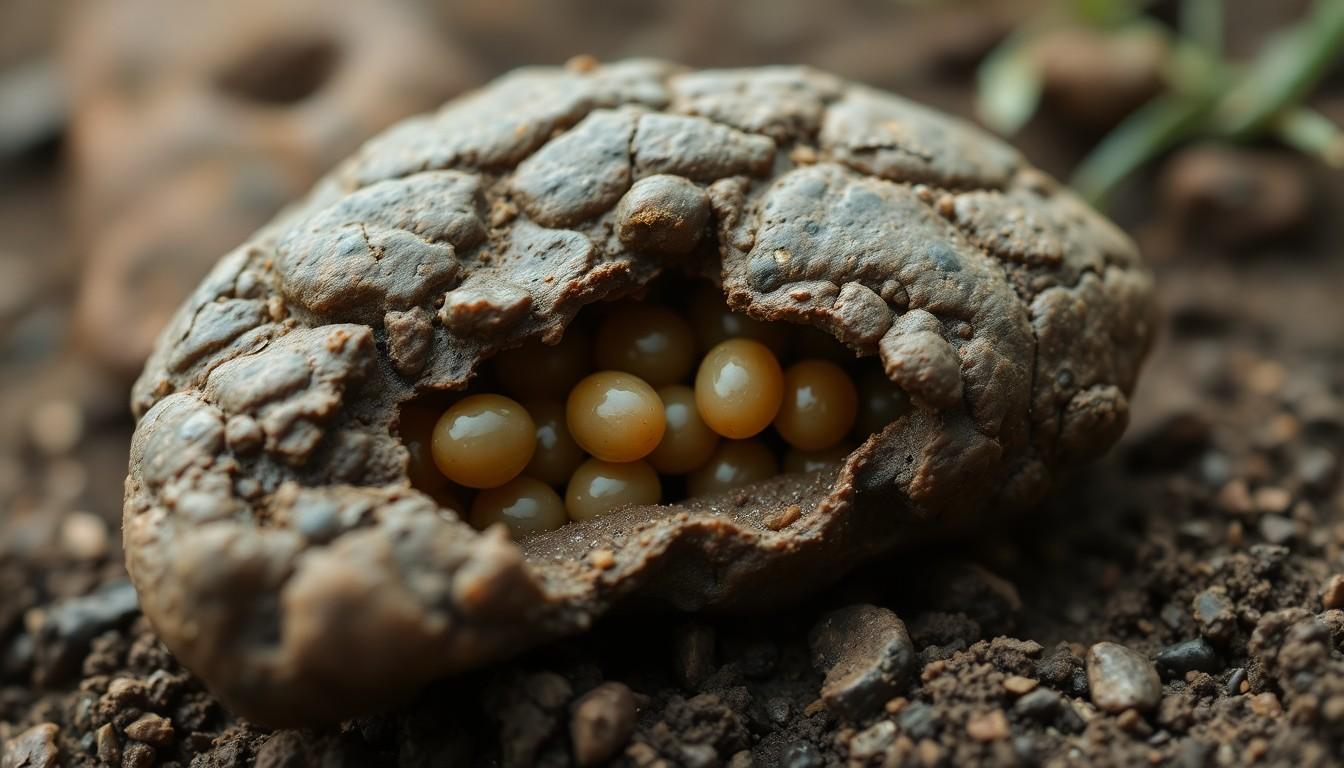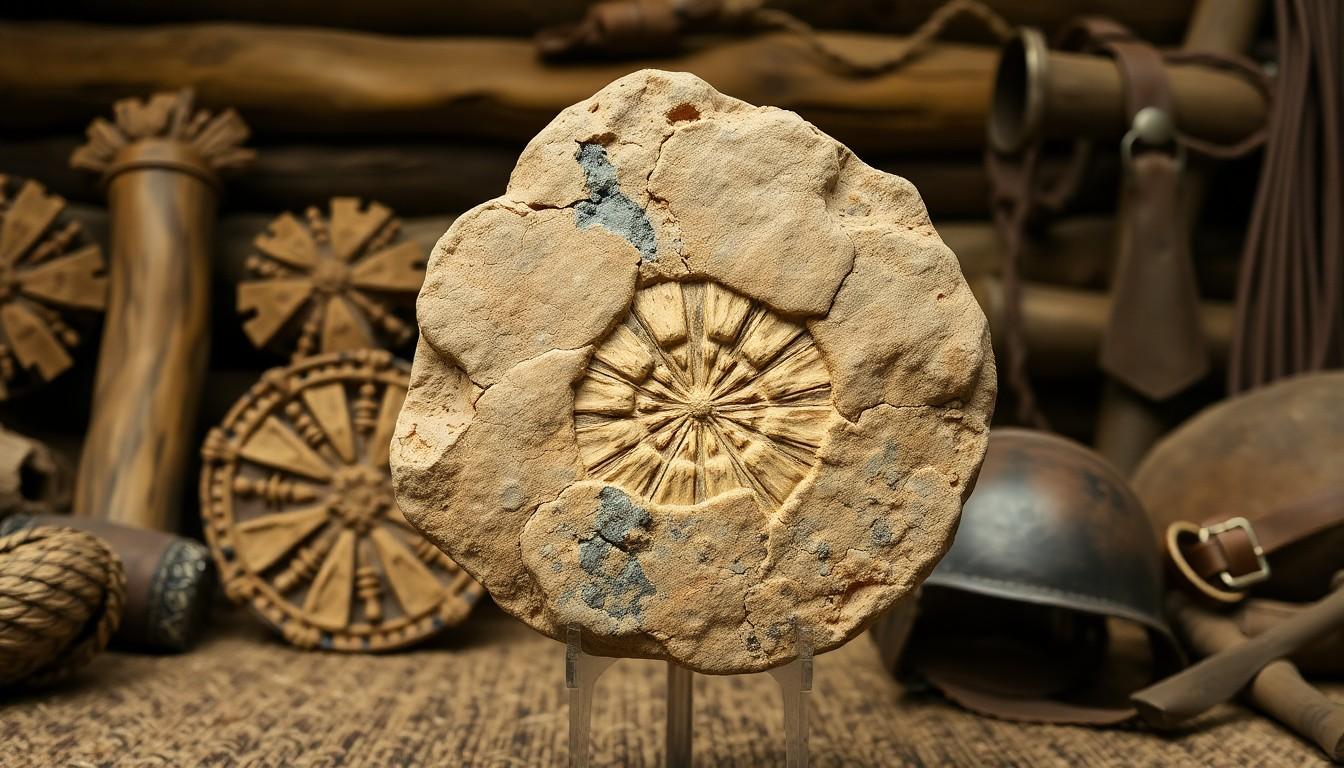Among human history’s most peculiar archaeological discoveries sits a remarkable specimen known as the Lloyds Bank Coprolite. This fossilized piece of human excrement, discovered in 1972 during excavations at a Lloyds Bank site in York, England, has become one of the largest and most well-preserved examples of ancient human waste ever found.
This unique specimen dates back to the Viking Age, around the 9th century. It measures an impressive 8 inches long and has captivated both scientists and history enthusiasts. Its exceptional preservation offers invaluable insights into the diet, health, and living conditions of Viking-era York inhabitants. The coprolite’s significance extends beyond its unusual nature, providing archaeologists with a rare window into the daily lives of our ancestors.
What Is the Lloyds Bank Coprolite?
The Lloyds Bank Coprolite is a fossilized specimen of human feces discovered in York, England. This remarkable archaeological find is the largest documented fossilized human excrement, providing valuable insights into Viking dietary practices from the 9th century AD.
The Discovery in Viking-Age York
York Archaeological Trust unearthed the Lloyds Bank Coprolite in 1972 during construction work for a new Lloyds Bank branch on Pavement in York. The excavation site, located in the former Viking settlement of Jórvík, yielded numerous preserved artifacts, including:
- Timber structures from Viking-era buildings
- Textile fragments showing Viking weaving techniques
- Leather items indicating craftwork practices
- Well-preserved organic materials due to York’s soil conditions
Physical Characteristics and Size
The coprolite exhibits remarkable preservation with distinct physical attributes:
| Measurement | Size |
|---|---|
| Length | 20 centimeters (8 inches) |
| Width | 5 centimeters (2 inches) |
- Original shape integrity
- Surface texture details
- Internal composition patterns
- Dietary particle distribution
Scientific Analysis and Dating

Scientific analysis of the Lloyds Bank coprolite, using modern archaeological techniques, unveils detailed insights into Viking-era health conditions. The specimen dates to the 9th century AD, during the Viking settlement of Jórvík in present-day York, England.
Contents and Composition
The coprolite contains hundreds of parasitic eggs, specifically from maw-worms and whipworms. These parasitic markers indicate severe digestive health issues experienced by the Viking individual, including:
- Intestinal inflammation from parasitic infections
- Chronic stomach discomfort affecting daily life
- Digestive disorders causing frequent diarrhea
| Parasitic Content | Health Impact |
|---|---|
| Maw-worm eggs | Intestinal inflammation |
| Whipworm eggs | Stomach discomfort |
| Hundreds of preserved eggs | Chronic diarrhea |
Preservation Status
The specimen maintains exceptional preservation quality, enabling detailed microscopic analysis of its biological components. The preserved parasitic eggs remain intact within the fossilized matter, allowing scientists to:
- Identify specific parasite species
- Calculate parasite egg concentrations
- Examine organic matter composition
- Study dietary patterns through preserved food particles
The remarkable preservation stems from York’s waterlogged soil conditions, which created an oxygen-free environment that prevented the decomposition of organic materials.
Historical and Archaeological Significance

The Lloyds Bank coprolite is a remarkable archaeological discovery from 1972, when a Lloyds Bank branch in York, England, was excavated. This fossilized specimen measures 20 centimeters in length and 5 centimeters in width, establishing it as the largest documented human coprolite.
Viking Diet and Health Insights
The coprolite contains preserved organic materials that reveal specific details about Viking dietary patterns. Scientific analysis identifies residues of meat protein, bran cereals, and undigested plant fragments, indicating a diverse diet common in Viking settlements. Microscopic examination exposes hundreds of parasitic eggs, including maw-worms and whipworms, demonstrating the presence of intestinal parasites in Viking-era populations.
- Building Materials: Preserved timber structures revealing Viking construction techniques
- Household Items: Leather goods indicating domestic activities
- Textiles: Fabric fragments showcasing Viking craftsmanship
- Trade Goods: Items demonstrating commercial activities in Jórvík
| Archaeological Features | Measurements/Details |
|---|---|
| Coprolite Length | 20 centimeters |
| Coprolite Width | 5 centimeters |
| Excavation Year | 1972 |
| Location | Pavement Street, York |
| Settlement Name | Jórvík (Viking-era York) |
Display and Exhibition History

The Lloyds Bank Coprolite maintains a significant presence in archaeological exhibitions, documenting its journey from discovery to its current display status. The specimen’s exhibition history spans multiple locations and includes notable preservation efforts.
Initial Public Display
The York Archaeological Trust first exhibited the coprolite at their Archaeological Resource Centre following its 1972 discovery. This educational facility served as the specimen’s initial home, where it gained recognition as a unique artifact from Viking-era York.
Preservation Challenges
The coprolite’s exhibition journey faced a setback in 2003 when it split into three pieces during a public display incident. Professional conservators successfully reconstructed the specimen, implementing enhanced preservation measures to prevent future damage.
Current Location at JORVIK Viking Centre
Since 2008, the Lloyds Bank Coprolite has resided at the JORVIK Viking Centre in York, England. The specimen occupies a dedicated display case within the museum’s collection of Viking artifacts, where climate-controlled conditions protect its structural integrity.
| Exhibition Timeline | Location | Status |
|---|---|---|
| 1972-2003 | Archaeological Resource Centre | Original Display |
| 2003 | Archaeological Resource Centre | Damaged & Repaired |
| 2008-Present | JORVIK Viking Centre | Permanent Exhibition |
Cultural Impact and Public Interest
The Lloyds Bank Coprolite is one of archaeology’s most distinctive artifacts, attracting significant attention from scholars and the public. As the largest known specimen of fossilized human feces from the Viking Age, it’s become a centerpiece exhibit at the JORVIK Viking Centre in York.
Public Engagement:
- Draws thousands of visitors annually to the JORVIK Viking Centre
- Features in educational programs about Viking life and archaeology
- Generates media coverage through its unique historical significance
Scientific Community Response:
- Paleoscatologists use it as a reference specimen for dietary studies
- Parasitologists study the preserved intestinal parasites
- Archaeological researchers examine it for insights into Viking health patterns
| Aspect | Discovery |
|---|---|
| Diet Components | Meat protein, bread residues |
| Parasites Found | Whipworms, maw-worms |
| Time Period | 9th century AD |
| Location | Viking settlement of Jórvík |
The specimen’s cultural significance extends beyond its scientific value, serving as a tangible connection to Viking-era daily life. Its discovery during constructing a modern bank branch creates an intriguing intersection between contemporary urban development and archaeological preservation.
The coprolite’s presence in museum exhibitions demonstrates how seemingly ordinary artifacts illuminate historical understanding. Its preservation status highlights the importance of proper archaeological conservation techniques in maintaining valuable historical evidence.
Conclusion
The Lloyds Bank Coprolite is a remarkable testament to Viking-age life in York. Its exceptional preservation has provided scientists with invaluable insights into ancient diet health and living conditions that would otherwise remain unknown.
While some might dismiss it as merely fossilized waste, this unique specimen continues to captivate researchers and visitors alike at the JORVIK Viking Centre. Its accidental discovery during modern construction proves that significant historical artifacts can emerge in the most unexpected places, shaping our understanding of the past.
The specimen’s careful preservation and ongoing study ensure that future generations can learn from this extraordinary window into Viking-era daily life. It’s a powerful reminder that even the most unusual archaeological finds can unlock crucial details about our ancestors’ lives.

